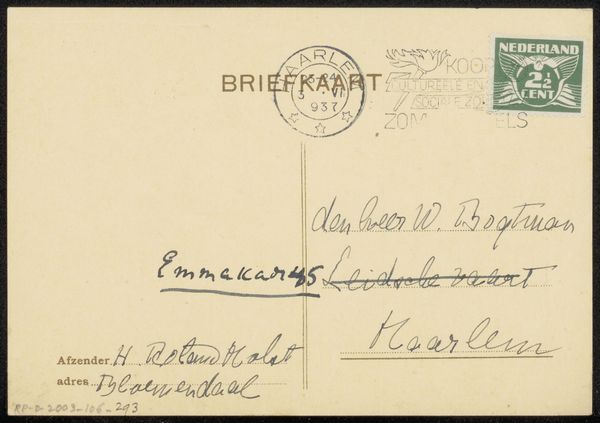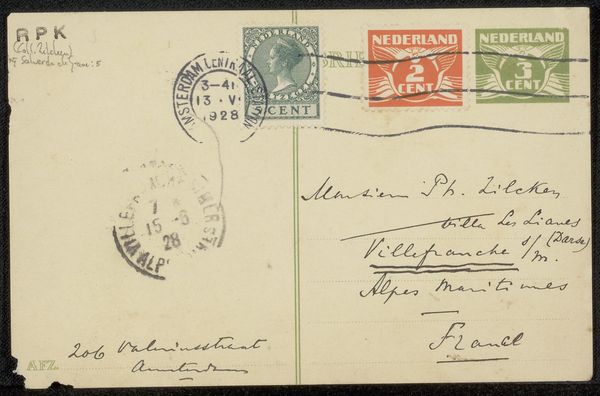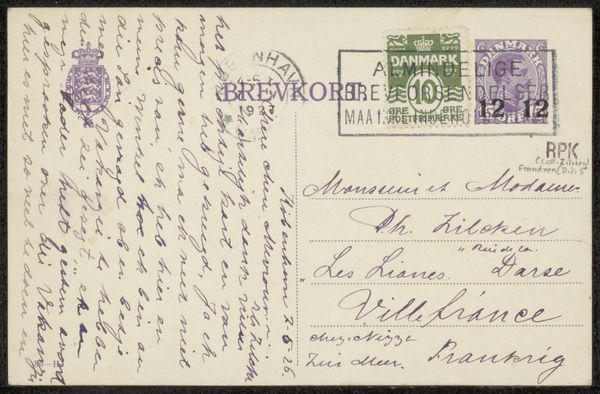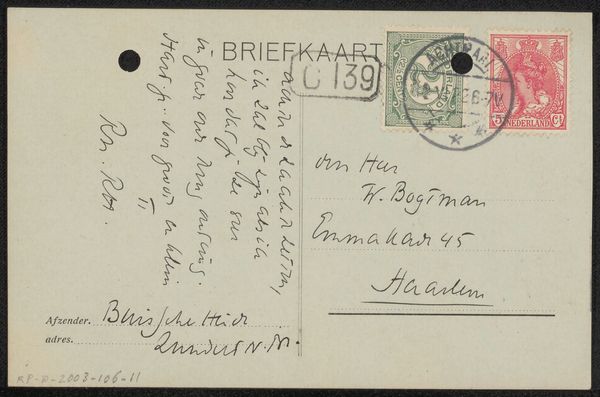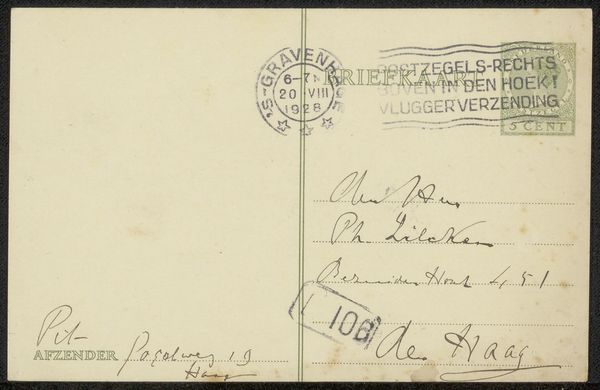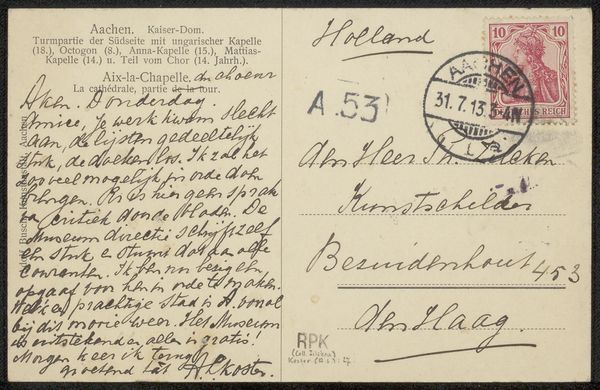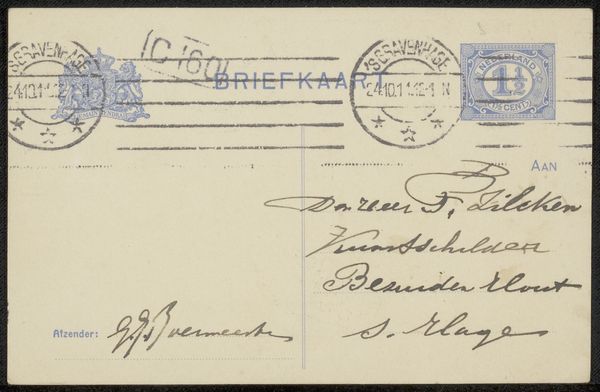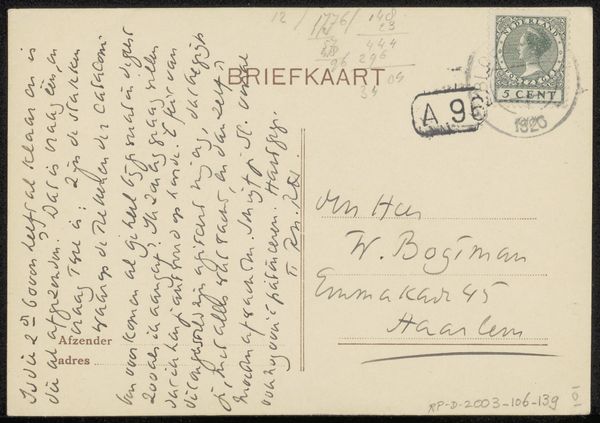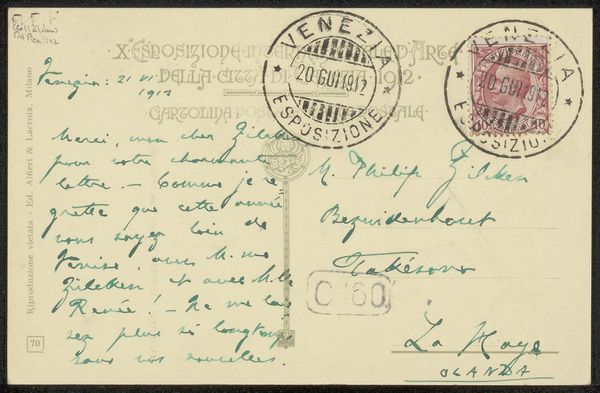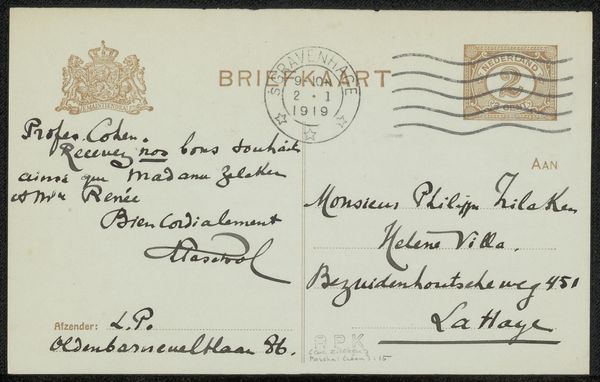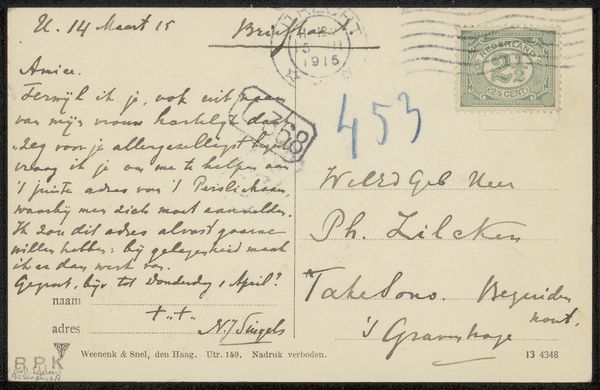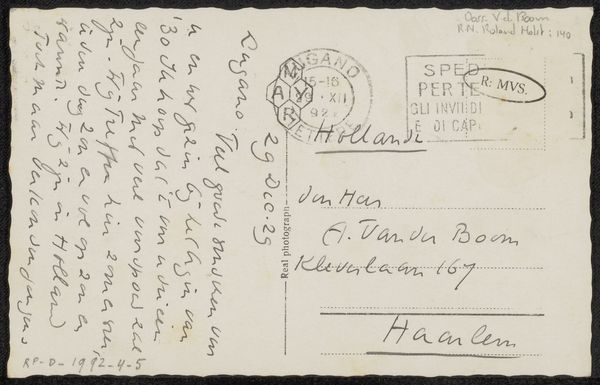
pen
#
hand-lettering
#
old engraving style
#
hand drawn type
#
hand lettering
#
personal sketchbook
#
hand-drawn typeface
#
fading type
#
pen work
#
sketchbook drawing
#
pen
#
sketchbook art
#
calligraphy
Copyright: Rijks Museum: Open Domain
Curator: Looking at this piece, "Briefkaart aan Philip Zilcken" by Cornelia van der Hart, made before 1918, the most striking feature for me is simply the handwriting, the script. It has a very elegant, almost anachronistic quality, doesn't it? Editor: It does. The texture seems light and airy, giving it a rather intimate feel, almost ephemeral. Like a whispered conversation frozen in time. But beyond aesthetics, it whispers a narrative about labor, time and human connection. Curator: How so? Well, look at the deliberate craft inherent in the letter. The act of physically handwriting, the ink used, and the paper quality reveal material conditions of that era and place. These materials, commonplace then, are carriers of memory and reveal accessibility of communication for this specific writer and recipient. Editor: I completely agree, the postcard format situates the art object firmly within the historical context of mass communication's nascent stages, it acted almost as a public form of connection. But consider the message—the words themselves, the sender's social position conveyed by the very act of writing. Who were these people, what was their relationship, what are the societal dynamics in play when van der Hart wrote to Philip Zilcken? Curator: These postcards circulated widely; that informs much about how communication networks were woven, not only amongst elite classes who had access to materials, but those further down the socio-economic rungs of the period. This postal system also reveals how information disseminated in 1918; there's something about physical travel required. Editor: The faded ink and postal stamps underscore those historical aspects – this exchange occurred during, or just before, a period of intense social and political upheaval, immediately pre or post WW1. And Scheveningen marked so clearly on the stamp, anchors that relationship between sender and recipient within particular geographic, cultural, and historical settings. What role might this have played given its social status as a coastal resort and place of exchange for artists, intellectuals? Curator: The careful execution of the lettering suggests a skilled hand; maybe there were calligraphic manuals and tools readily available shaping practices during the time that dictated the form. Or what of Van der Hart, specifically? To learn more of her practice is to investigate female artistic engagement beyond the constraints placed during those times. Editor: It really brings up layers of interpretation that open a wide window into that period. I would be curious about Philip Zilcken's story, their networks, as part of unearthing Van der Hart's larger legacy, because that connection illuminates even more. Curator: Absolutely, both methodologically and contextually! These kinds of works offer rich insight, once you begin unraveling threads to understand the materiality. Editor: Indeed; the artwork becomes less a singular object and more a touchstone for broader cultural understandings.
Comments
No comments
Be the first to comment and join the conversation on the ultimate creative platform.
